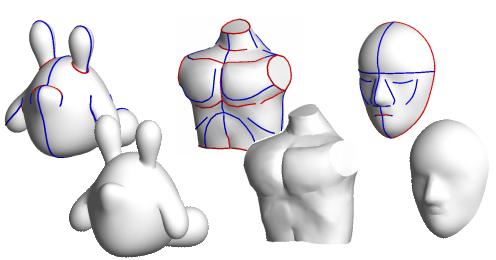_004.jpg)
In most of the posts you will note that the plural 'we' is used even though, at the moment at least, there is only one 'I' actually doing the writing. The use is 'we' is intentional because this blog is intended to be a place where many visionary people can contribute to our understanding of the soon-to-be rapidly growing desktop 3D printing phenomenon.
But, this post is a personal message from me to you. It's meant to encourage you to be a visionary when it comes to evaluating whether or not to invest in one of the first 3D machines. Vision is something that can be here one minute and gone another. Sometimes I've been a visionary and other times I missed opportunities due to lack of vision.
I vividly remember one such failure of vision. It was sometime in the early to mid 1970's when I was a young video producer. A man had called me to his office to make me a proposition. He explained that he was putting together a kit that would be used to create a home computer. The only problem was that he had no money and wanted me to create a training video to be paid for when sales came in.
I had previously worked with mainframe computers and simply could not fathom why anyone would ever want a computer in their home. What in the world would one do with such a thing? I passed, and it wasn't long before I realized that I'd let a great opportunity get by me for lack of vision. That was a very valuable lesson.
Fortunately, other opportunities to be a visionary came along. But, this time I was ready for it. By the late 1970's, it was beginning to dawn on me that a computer might be useful after all. In fact, it might help me with my video productions by creating titles and even animations. One day, as I was walking through a store I spotted a video game, the
Bally Professional Arcade that included a programming language.
It was crude to say the least. Very crude. The best resolution it could deliver was just 160x100 and it dropped to 160x88 when Bally Basic was used to program it. Had I been in my non-visionary mode at the time, I would have simply dismissed it and walked away. But, fortunately, that happened to be one of the days when I was wearing my visionary hat. I bought it. And, thus began an extraordinary adventure.
While trying to learn all I could about the Bally, I found out about the DataMax UV-1 built on the same chipset; but, having twice the resolution... a whopping 320x200! It used a marvelous graphics and animation language called ZGrass by
Dr. Tom DeFanti. I bought one.
This in turn lead to my being hired by Astrocade, the company that marketing the Bally Professional Arcade. Soon, I was traveling all over the US and Europe, going places and meeting people that I could never have dreamed. Within two years of my having the vision to see something special in that crude little video game system I'd sat playing video games with the CEOs of Hasbro, Fisher-Price, Quaker Oats, Marvel Comics, ITT, Standard Elecktrik - Pforzheim, etc. I'd been invited to an Omni Magazine birthday party for Isaak Isimov and, while I'm not much of a party animal, was whisked to the head of the line at Studio 54's Conan party to meet Arnold Schwarzenegger and Grace Jones.
And, it was ALL because on that particular day I didn't dismiss the video animation potential of a crude little game system. On that day, I was a visionary and my life would never be the same.
Why do I bring up this story?
Because I see that same opportunity, today, in the 3D fabrication kits and low-cost desktop printers that will be coming into the marketplace in the next few months. And, I hope that you will be a visionary as you evaluate them. Some are going to look at them and dismiss them as too crude or too slow. For some that will be an opportunity lost for ever.
But, for those that see beyond what these machines
can't do... and, for those with the vision to
push them to the limits... there can be exciting days ahead. For educators it might mean new ways to motivate students. For artists it might mean entirely new creative directions. For others it might even mean, like the Bally Professional Arcade did for me, an entirely new career and direction in life.
At the very least, follow this new industry as closely as you can. it's going places.


















_004.jpg)




